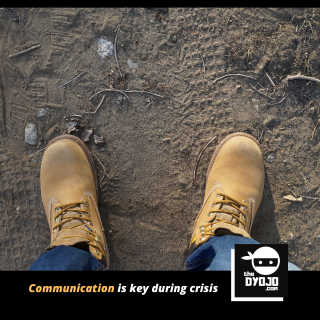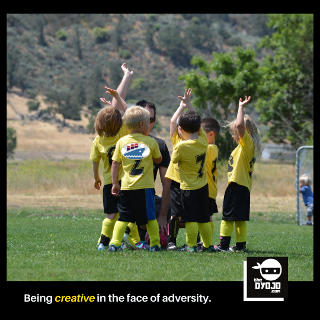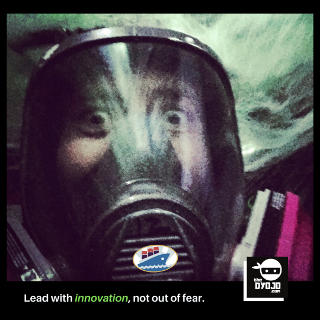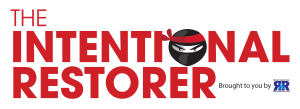 When guitar manufacturing icon Gibson Guitars was on the ropes they called an audible, hiring an unknown outsider who transformed the company by listening to his team. When was the last time you watched Undercover Boss? I became aware of the show in 2013 when the company I was working for announced our CEO would be on the show. My co-workers and I thought this ought to be good, being that employees in our property restoration business respond at all hours of the day (or night) to various damages including water, fire, mold and blood. How would our CEO, who started in the trenches, respond to the everyday challenges that our technicians faced as he interacted with our counterparts in other parts of the country? Long before Undercover Boss popularized the concept of executive level leaders donning terrible wigs and getting their hands dirty in their own operations, there were innovative leaders like Ted McCarty. Who is this Ted Mc-WHO-ty? We will answer that question but before we do let’s take a brief walk through the time period and the organization to which he was called, the iconic guitar manufacturer, Gibson guitars. If you have observed any value from leaders going undercover in their businesses, wait until you see what Ted can do by being an out-of-cover manager and listening to his employees. Gibson Guitars in the pre-McCarty era If you know anything about rock and roll, would you be surprised to know that Gibson had initially passed on the option to usher in the dawn of the solid body electric guitar? Could you imagine Jimmy Page of Led Zepplin or Slash of Guns N’ Roses without their Les Pauls? In 1930, Les Paul brought his ugly little innovation “the log” to the Michigan based manufacturers and they wholeheartedly rejected his idea. An inventor who wasn’t yet a player in the instrument market, Leo Fender, soon rose as the first to market in the absence of Gibson’s collaboration with Mr. Paul. Even though Leo was first, neither Fender nor Gibson would be strumming for success in this market segment for several years. At the turn of the decade, Gibson wouldn’t even be producing instruments at scale as they transformed their factory into a wartime production line. World War 1 officially ended in 1918, but things in Europe and abroad were still simmering with tension. Many point to September 1, 1939 when Adolf Hitler’s German forces invaded Poland as the final straw that brought the reluctant nations of England and France back into the fray of opposing Nazi expansion. For two years, up until December of 1941, the United States was resolute to avoid participation in the Allied efforts of World War 2. The bombing of Pearl Harbor in Hawaii on December 7, 1941 by the Japanese quickly changed that decision. “Yesterday, December 7, 1941 a date which will live in infamy the United States of America was suddenly and deliberately attacked by naval and air forces of the Empire of Japan.” — President Franklin D. Roosevelt A proud history of working women rising to the challenge By early 1942, The United States was in full swing to mount a defense against the advancing threat of a Japanese invasion as well as assisting their Allies to recapture land taken by the Axis forces in Europe. Gibson guitars, like many other manufacturers in the States, transformed their operations into wartime production plants. At their headquarters in Kalamazoo, Michigan, Gibson hired over 200 women between 1942 to 1946 to make munitions. The Kalamazoo Gals were also responsible for producing upwards of 25,000 of the highly sought after Gibson “Banner” guitars. Necessity gave hard working women an opportunity to display their abilities in the workplace. When the world went to war, even those who were not fighting on the front lines were enlisted to help the military efforts. Our allies in England set the example as, “The British government mobilised civilians more effectively than any other combatant nation. By 1944 a third of the civilian population were engaged in war work, including over 7,000,000 women.” Gibson, joined factories across the Allied nations, to produce wood and metal products for the wartime effort. Gibson Guitars in a downward spiral Chicago Musical Instruments (CMI) purchased Gibson Guitars in 1944. Mauric Berlin soon discovered that there was trouble in Kalamazoo. He was sitting at the helm of a company that had an iconic image but was hemorrhaging upwards of $10,000 a month (estimated equivalent to $175,000 in today’s dollar). Berlin called upon a former business acquaintance, Ted McCarty, who was an engineer by trade and had been working for the musical manufacturer Wurlitzer for the last 12 years. McCarty had hit his growth ceiling at Wurlitzer and was ready for a new challenge. Whether Berlin knew it or not, Ted was ready to sign an agreement to become the assistant treasurer with the Brock Candy Company. Maruric was available for lunch and hungry for talent. By contrast, Brock’s decision making ability had stalled out when the owner could not be reached while he was on vacation. In that void of decision making ability, the Candy Companies lapse became the first break for Berlin and the future of his new acquisition at Gibson. Gibson was quicker to get the pen into the hand of emerging talent than Brock, which brings up a few nuggets for those in a position of leadership to take note of:
“We decided that every day we would go through the factory and find one operation that we thought could be improved.” — Ted McCarty on his relationship with John Huis Listening to and empowering employees might just work McCarty was hired by Gibson in 1948, the same year that Leo Fender started producing his Broadcaster solid body electric guitar. Ted’s first visit was back to the production floor where many of the issues revolved around poor management by then general manager Guy Hart. If morale continued in its low state, the transformation Ted was orchestrating would not generate any harmony. His visits at the ground level allowed him to identify a 15 year employee, John Huis, who expanded his understanding of the problems while also helping Ted to identify solutions. Listening to employees enabled McMarty to make progress in the process of improvement. Ted believed that there were too many foremen and without a central superintendent who was responsible for oversight of all the sections there were glaring inconsistencies. This lack of clarity was prohibitive. McCarty promoted Huis to this new role and Hart resigned. The overlooked diamond in the rough was promoted and the cancer (Hart) was removed. Freeing Ted to move on to bigger issues within the Gibson organization and empowering Huis to improve the production systems while establishing a strong working environment for the team. “We were growing, from 150 employees, growing and growing and growing, and we had about 1,200 when I left in ’66.” - Ted McCarty on growth When leaders empower their people, everyone wins Not only did Ted listen to employees, he Ted believed that being friendly with the staff was important. He even went so far to make it his goal, with only 150 employees, to remember the names of individuals as well as something significant about them as people. This commitment transformed the attitude of the employees towards management. McCarty and Huis continued to collaborate and decided to walk the floor daily, “To find one operation that we thought could be improved (Bacon, 2018).” Ted understood the impact of leading by example, to hold himself and his core leaders accountable for the change in culture as well as the commitment to growth. By identifying issues, taking action and empowering people, McCarty and Gibson went from bleeding money in March to making a profit by May of 1949 (Price). Ted was Vice President within a year and President of Gibson by 1950. How refreshing is it to see that a leader who is committed to making their organization a good place to work can find the means to revolutionize a dying brand? Ted had clarity, consistency and accountability working in the organization. He was enjoying his work, employees were thriving in a positive environment and the organization was firing on all cylinders. “I was working with the rest of the engineers, and we would sit down, like in a think tank, and we would talk about this guitar: Let’s do this, let’s try that.” — Ted McCarty on innovating with his team Once the core of the organization is healthy, the possibilities are limitless for innovation With Gibson back in the business of making guitars it was now time to improve the position of the business in their market. They weren’t the first to the market for the solid body electric guitar but Ted was instrumental in building an innovative culture. They started by partnering with Les Paul to be the public face of their electric guitar which bore his name and came to market in 1952. Ted pioneered many of the features and worked out the deal with Les on a napkin, a deal that held when reviewed by the lawyers. Ted McCarty was never a musician and yet he had a 60 plus year career with three successful companies in the industry and is regarded as a key figure in the golden years of Gibson as well as the evolution of the solid body electric guitar. How was Ted able to leave such a mark in the industry? When he wanted to fix the factory, he listened to the employees. So, he took the same approach to revolutionizing the guitar — listen to guitar players. His team focused on quality and made adaptations that addressed the needs of musicians. Even though Gibson had passed on the guitar innovation back in the 1930’s, after Fender brought his unit to the market there were many manufacturers who still thought it was just a fad. Ted was undeterred when his competitors told him, “Anyone with a bandsaw can make a solid body guitar. Bandsaw and a router, that’s all you need.” Ted sought ways to innovate without sacrificing the quality that had built their company’s brand. “Fender was talking about how Gibson was a bunch of old fuddie-duddies…I was a little peeved. So I said, ‘Let’s shake ’em up.’ I wanted to come up with some guitar shapes that were different from anything else.” — Ted McCarty on maintaining a competitive edge Unleash your strengths and allow others to do the same Ted left splashes of his fiercely competitive nature. One of the signature features of the initial Gibson Les Paul was the arched top which Ted incorporated primarily because he wanted, “To do something Leo Fender couldn’t do.” When rival Fender called Gibson out for it’s archaic approaches to the market, McCarty made it his personal mission to launch designs that had never been seen. The Flying V, Explorer and Moderne came out of this competitive drive, which weren’t commercially successful at the time but have experienced periods of popularity in more recent years. McCarty developed key collaborations from within and without to the benefit of Gibson. He also was able to guide the successful acquisition and integration of their competitor Epiphone to drive his vision of expanding their capacity to compete in the market for bass guitars. McCarty led Gibson from hemorrhaging money to consistent profitability which steadily increased 15 times. His sales grew by 1,250 percent, the work force expanded tenfold and production went from 5,000 to 100,000 guitars per annum. “I went there [to Gibson] on March 15, we lost money in March, we lost money in April, we made money in May, and we made it for the next 18 years — never had a loss. I left there in ’66, when I bought this company from Paul Bigsby.” — Ted McCarty on his achievements at Gibson Old dogs don’t always need new tricks McCarty continued his habit of walking the floor at Gibson where he could see the issues clearly. In later years, McCarty saw that trouble with leadership was on the horizon and he decided to look for opportunities elsewhere. Good talent can slip through your organization’s fingers in many forms including slow hiring processes, poor engagement, overlooking internal talent and devaluing contributors. Ted and then Vice President John Huis resigned at Gibson in 1966 and started a new venture as owners of Bigsby Accessories, Inc. While Gibson and McCarty was not a relationship that endured the test of time, his relationship with Huis was. It should be no surprise that McCarty at 56 years old still had fuel in the tank and was successful at Bigsby, implementing many of the same core values in the new company. He was brought out of retirement by Paul Reed Smith who credits Ted as being a critical mentor to his own success even though Ted was legally blind by the time they met in the 80’s. As we said, while you may have never heard about Ted McCarty, there is much to learn from his story that can be applied to any organization. Ted is no longer with us but you can still glean key takeaways from the methods of Mr. McCarty in transforming an organization into a competitive force in the market. Six timeless keys for building success from Ted McCarty’s playbook:
Additional Resources from The DYOJO:Pro vs. Joe is the podcast with a podcast, brought to you by The DYOJO Podcast. Bryan the "Joe" and Jon the "Pro" share their unique perspectives on entrepreneurship, property restoration and growing as a leader.
2 Comments
 Don’t let fear prevent you from getting out of the truck Following the promise of the American Dream, Idan Shpizear traveled from Israel to California with a desire to spread his entrepreneurial wings. As he entered the trades, he soon learned taking flight was not going to be without bumps and bruises. He earned his stripes in carpet cleaning as he and his partner lugged around a portable carpet cleaner in the back of their beat up Volvo. He endured, built a business, and scaled 911 Restoration in a rapidly growing franchise. His newly released autobiography encourages entrepreneurs that, “With patience, diligence and passion, you’re bound to discover how much you’re capable of.” In an interview with the Huffington Post, Idan recalls the perseverance of his early years, “It was such a fun time, and it was a constant effort to overcome challenges. We had freedom; we had nothing to lose and everything to gain.” As we discuss the paths taken by entrepreneurs, this optimism in the face of adversity is a consistent thread. In Episode 15 of The DYOJO Podcast, Denis Beaulieu shared a similar perspective of no risk, no reward which his mom also presented to him in the question, “What have you got to lose?” Going from tradesperson to entrepreneur Idan shares his experiences as well as his perspectives on building the business you always dreamed about in his book, Get Out of the Truck. In writing the book, his goal is to share the essential lessons that assisted him to get out of the truck both physically and mentally. It is a book for aspiring entrepreneurs, especially tradespeople who dream of hanging their own shingle in the market, by a dreamer who has successfully built one of the fastest growing franchises in the United States. The book is a quick read. It was designed to either be read from cover-to-cover or as a resource that can be referred to as a business person goes about their process. Idan also speaks as a leader to other people in a position of leadership, distributing the lessons that he has learned as he built and scaled his property restoration business. Whether you are starting out or taking your organization to the next level, Idan shares, “As you work towards growing your company, don’t lose sight of the numbers. But don’t lose sight of these less tangible objectives either.” Constantly developing your skills as a leader Leaders who are not engaged in their business will struggle to work beyond symptoms to find solutions to their problems. In a poignant moment in the book, Idan notes, “I cannot tell you how many times a business owner has complained to me that business was slow because of the marketing. But then when I called their store, the receptionist was rude, disinterested or unhelpful.” Such a simple truth that can cripple your ability to grow as an organization, which is something we also addressed in Garbage In, Garbage Out. You can acquire a copy of Idan’s book, Get Out of the Truck on Amazon as well as read his thoughts on the 911 Restoration Blog. Mr. Shpizear also shares his thoughts on leadership and personal development in his monthly column Fresh Perspective featured in Restoration and Remediation Magazine (R&R). Additional Resources from The DYOJO:Ed "The Restoration Lawyer" Cross joins The DYOJO Podcast to discuss protecting your business through improving your contracts, protecting your business and following industry best practices. Organizations that increase their communication and execution will thrive in spite of COVID-19. For most areas, even where stricter quarantine protocols are in place, construction is being considered as an “essential service”. Property restoration has typically been included in this designation as well. For those who are concerned about being excluded the Restoration Industry Association (RIA), Institute of Inspection Cleaning and Restoration Certification (IICRC) and National Air Duct Cleaners Association (NADCA) released a joint statement requesting Federal, State and Local Officials to consider our industries as essential businesses. Any contractor concerned about being included as “essential” should reach out to their local builders association and reference this joint statement. Crisis has a way of exposing the flaws in our existing processes. Organizations that were lax in their health and safety programs and continue to function with the mindset of “business as usual” will find themselves in peril. Many contractors and their employees are glad to continue working during this time as the economic impacts are a part of the overall picture of risk as we form responses to COVID-19. Many key voices in the industry have been rising to the occasion and doing their best to share sound information amongst peers. Some examples include:
Best practices for occupied worksitesWhile there are many unknowns with this novel coronavirus, in construction and property restoration the necessity of site health and safety is nothing new. From the AGC COVID-19 Job Site Practices, a few key additional precautions will help contractors to reduce the risk of exposure and potential spread of SARS-CoV-2. In addition to evaluating the specific hazards of each individual jobsite, some of these extra steps that should be practiced and documented when workers are entering occupied buildings and homes include:
Too often we take health and safety for grantedTo demonstrate that your company is committed to employee safety, a designated person in the company should be reviewing the ongoing release of information to update your organization's safety plan. Communication must increase during this time, and moving forward, rather than going radio silent and hoping it will all blow over. Hands on training should be performed and documented for everything which includes simple tasks such as washing hands, as well as pre, during and post work day cleaning protocols. Now is an important time to review your processes, which are often taken for granted, such as:
While many contractors are not engaging in COVID-19 clean up response, it is still important to understand what other service providers are learning about this issue. Whether you work for a restoration company that is considering coronavirus clean up or you are a GC that wants to keep you people safe, you will find value in the Three Tip Sheets provided by the Global Risk Advisory Council (GBAC), a division of ISSA.
Risk assessment and minimum measuresOn most construction sites, safety meetings are a daily occurence. One simple change during these unique times would be to have the supervisor sign everyone in rather than passing around a clipboard. Toolbox safety meetings should include discussion of and hands-on training for implementing the protocols mentioned above. Organizations will want to increase their documentation of communication, training and preventative measures, both to cover themselves from future scrutiny while also ensuring the information is reaching all team members. Worksite response should include partnering with the client to understand the potential for exposure. Asking questions such as, “Were there any persons, diagnosed or suspected, with COVID-19 who were at this site prior to our arrival?” A designated person should complete a pre-work evaluation of conditions and document these while creating a specific worksite plan which at minimum includes cleaning of touch points on a regular basis every day. The AGC recommends additional cleaning such as job site toilets to be disinfected by the provider at least twice a week, jobsite offices/trailers and break/lunchrooms to be cleaned at least twice per day. Now, more than ever, is a time for people in a position of leadership to step upLeaders need to lead. Crisis has a way of exposing the flaws in our systems. If you are resting on what you accomplished in the past or how you did things even a week ago, you aren’t leading and your company will struggle. With a little bit of thought, some clarity on expectations for this new world and a willingness to adapt as you all learn together, businesses can make some win-win scenarios that will keep talent as well as help them chart a path forward. Organizations should increase their level of communication with their team members during this time. Leaders should be on the front lines with their employees both to show them that we are all in this together as well as to have an ear open for strong ideas from the field that may come from sources that would otherwise be missed. COVID-19 is exposing holes in leadership-think and business systems, it's time to adapt or die. When I coached soccer for young kids, every season a unanimous point of contention was running. Ask any coach, if the kids are acting up, “Just make them run.” While conditioning is an essential component of the sport, it’s trite how often running is utilized as a disciplinary tool as well. On the other side of the ball, what do players complain about, “Why do we have to run so much?” I knew it was my role as a coach to teach these kids the fundamentals of soccer and to help them be competitive in our matches, but I understood quickly that if we could make the process enjoyable we would get much further in reaching our goals. Don’t get me wrong, I used to love it when kids whined about conditioning, I would ask, “If you don’t like to run, why did you pick soccer.” Some of them would reply, “I didn’t, my mom is making me play.” Touché. If we put ourselves in the young players mindset, they just spent the day at school sitting in a classroom getting lectured about things many of them are not interested in. They see an open field and their friends and they want to play. As coaches, we decided that we didn’t want to make running a constant punishment, we wanted the kids to enjoy the sport. Yet, we probably ran more than most teams in our league. How you phrase the conversation with affect you ability to implement changesAs we navigate the working world with COVID-19, I can’t help but see some parallels with the above scenario and the discussions around companies attempting to navigate their staff working remotely. I hear several employers contemplating aloud whether employees can be as productive working from home as they are working from the office. We will break some of this down, but one piece of the puzzle I would like to present to those in a position of leadership is how you phrase the conversation. In my coaching days, I discovered a very simple drill. The kids would gather into two lines with one coach in the middle. Coaches would throw a soccer ball as far as they could and the players would run to retrieve it and then scrimmage one-on-one the whole way back. The players literally sprinted to get the ball, they worked on footwork with opposition on the way back and everyone was gasping for air by the time our drill was done. Cardio, skills and scenarios in one simple drill. No one complained about having to run because the running was wrapped into an exercise that we were all doing together. We accomplished quite a bit by being creative. Working remotely is something every company should be experimenting with for the purpose of attracting young talent, providing options to retain existing talent and developing resiliency. Even prior to the novel coronavirus (SARS-CoV-2) outbreak, in the Pacific Northwest there have been many talks about a Cascadia earthquake event as well as other emergency scenarios which should have sparked remote work conversations. The world is changed and your only path to success is forwardThis pandemic is changing our lives and our economy. Life will not be the same once we flatten the curve and develop solutions to COVID-19. So many companies are making bad press for themselves with the public and with their employees through their haphazard actions. As a person in a position of leadership, you will never please everyone, but you must lead. This pandemic is exposing holes in systems worldwide that were not being tightened up because we were all prospering. Now that things are rapidly changing it is time to make adaptations that should have happened long ago. Communication is key. I am thankful that in Tacoma, Washington, the Chamber of Commerce and the Economic Business Development, among others, have been holding tri-weekly updates on facts and resources for local businesses. No one has all of the answers and we are putting this puzzle together one piece at a time. Setting up company updates about:
If you aren’t listening to your employees, you may be missing out on some key opportunities for collaboration and ideas that could save your business. Your concerns about remote work are with your systems not your people There are companies that already have significant portions of their workforce working remotely. I know of one technologically savvy company in the real estate space that provides parameters as well as freedom for their agents. This company has “peak hour” requirements where employees are required to keep a certain amount of their day/week open in those time frames when clients have the most need for service. A process like this demonstrates that the company has a firm grasp on what their clients needs and habits are as well as a means to align their workforce with that business stream. Even before coronavirus, as a person in a position of leadership, you should be asking whether your current process aligns your workforce with your client needs. A common objection to working from home is that employees won’t be as productive. Somehow, people in a position of leadership believe that employees sitting at a desk where they can be observed are somehow more productive. This is like sleeping with the light on when you are scared. It’s ridiculous. If there really is a threat, the presence of a 60 watt bulb will not stop a monster, nor does the “watchful eye” of a “trained manager” increase worker productivity. Setting your team up for success by creating a measurable processI am intentionally not including sources to support my position, if you feel strongly about working from home then you will find research that will support your position (confirmation bias) one way or the other. My contention would be that sitting at a desk is a piss poor metric for productivity. If you are that leader, my questions would be:
In my experience, the same people who judge productivity by butts in seats are the same companies that have no real systems for performance evaluation or improvement. Now is the time to get real about what a productive employee looks like in your organization. When I was coaching, it was the same thing there, coaches would brag about how often their kids ran because they were misbehaving. Many of them had terrible teams full of players who didn’t enjoy the sport and had no passion for learning. Too often as coaches or people in a position of leadership we blame the employee or the player. Soccer is supposed to be fun. It’s a hard game but it’s a blast if you can learn to improve a few key skills. Business as well is fun, it is a blast to land a contract, build relationships and see your team thrive. Now, more than ever, is a time for people in a position of leadership to step upLeaders need to lead. Crisis has a way of exposing the flaws in our systems. If you are resting on what you accomplished in the past or how you did things even a week ago, you aren’t leading and your company will die. Embrace innovation but understand it doesn’t have to be something crazy, going back to our simple “running” drill - it had a purpose, touched on key performance points and we all had fun doing it. Business can be this same way. With a little bit of thought, some clarity on expectations for this new world and a willingness to adapt as you all learn together, businesses can make some win-win scenarios that will keep talent as well as help them chart a path forward. What are you doing to create clarity, consistency and accountability in these key areas?
|
AuthorThoughts on personal and professional development. Jon Isaacson, The Intentional Restorer, is a contractor, author, and host of The DYOJO Podcast. The goal of The DYOJO is to help growth-minded restoration professionals shorten their DANG learning curve for personal and professional development. You can watch The DYOJO Podcast on YouTube on Thursdays or listen on your favorite podcast platform.
Archives
March 2023
Categories
All
<script type="text/javascript" src="//downloads.mailchimp.com/js/signup-forms/popup/unique-methods/embed.js" data-dojo-config="usePlainJson: true, isDebug: false"></script><script type="text/javascript">window.dojoRequire(["mojo/signup-forms/Loader"], function(L) { L.start({"baseUrl":"mc.us5.list-manage.com","uuid":"b9016446bd3c6a9f0bd835d4e","lid":"83282ffb9e","uniqueMethods":true}) })</script>
|
Jon Isaacson |
Connect. Collaborate. Conquer.
© COPYRIGHT 2015. ALL RIGHTS RESERVED.
|





 RSS Feed
RSS Feed